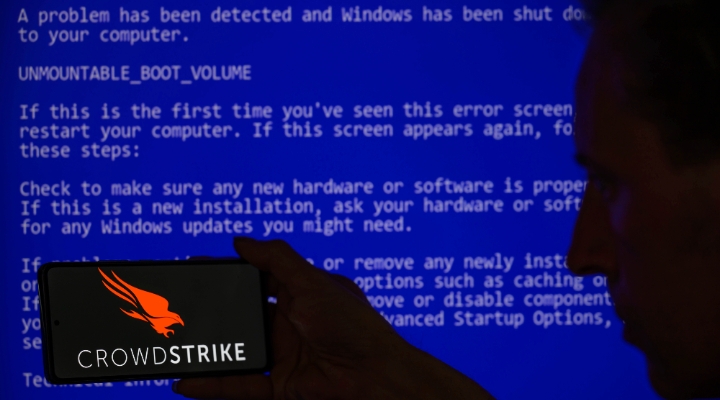It will be a grave injustice to describe Peter Cundill solely as a famed value investor. More apt would be the epithet bestowed upon him at an awards ceremony: Indiana Jones of Canadian Money Managers.
The book "Routines and Orgies: The Life of Peter Cundill" was so named as the flamboyant money manager was greatly taken with Aldous Huxley's words: "the rhythm of human life is routine punctuated by orgies". Avid sportsperson, marathon runner, extensive traveler, committed philanthropist, coupled with his dalliances with women and investing genius, point to a truly multi-dimensional personality.
His first job was at Wood Grundy, the premier Canadian broking and investment banking presence in Europe, during a boom in mining shares. He was given the task of overseeing the London branch’s stock-positioning book.
Lunchtime for senior people in the City of London at that time was a 2 to 3-hour affair starting with aperitifs and finishing with port or brandy and cigars. Even at more junior levels, the concept of a sandwich at the desk was unheard of. So, it was not surprising that the newbie Peter often found himself at midday, handling the desk on his own, since his colleagues and most clients would be out lunching.
On one occasion the phone rang unexpectedly and the voice at the other end shouted, “Quick, give me a price in Steep Rock.” He promptly responded: “Six to a half”. The individual on the other sold a 1,000 to him. It never occurred to him that he was not licensed or empowered to trade. His colleagues were aghast, but were forced to carry on with the deal since it would be unprofessional not to. Fortunately, they closed it with a respectable profit.
While he got out of that unscathed, his personal bet did not pay off. He bought $500 worth of a speculative mining stock and in less than 48 hours lost it all. His worst investment experience, and one he never forgot.
Eventually, he developed his own investing style that followed a deep value strategy and popularized the concept of “buying a dollar for 40 cents”.
1. The hunt for value must not be blinded solely by cheap stocks. Devour a company’s profit-and-loss-statement and balance sheet and hunt for hidden assets. Buy companies below their liquidation values.
He swore by the "margin of safety" method as it provided the solid theoretical back-up to selecting investments based on the principle of realizable underlying value.
In his book, “There’s Always Something To Do”, Christopher Risso-Gill explains why the concept got Cundill’s attention: A share is cheap not because it has a low price earnings multiple, a juicy dividend yield, or a very high growth rate, all of which may often be desirable, but because analysis of the balance sheet reveals that its stock market price is below its liquidation value: its intrinsic worth as a business. This above all is what constitutes “the margin of safety.”
One of Cundill Value Fund’s first investments was J. Walter Thompson, or JWT, an advertising agency. The company went public in 1972 at more than $20/share.
Along came a double whammy. During the recession of the 1970s, the advertising industry was hit hard, more than most other industries. Haldeman, President Nixon’s ex-chief of staff, who had been previously head of JWT’s LA office, was imprisoned for his part in the Watergate Conspiracy. JWT sank to around $4/share.
Cundill saw that it was profitable, paid a dividend, and had a book value of $18 a share that did not include its freehold building in Tokyo and Paris, and a long-term lease in Berkeley Square. He accumulated JWT’s stock with the average cost of just over $8/share, until it reached 10% of the assets of the fund. A year later, he sold his position at well over $20/share.
Bethlehem Copper was a classic Graham net-net: a company whose share price was trading below its working capital, net of all its liabilities. What caught his attention was that the company had no debt and the shares were actually trading at the price of the cash on the balance sheet. The mining operations were profitable and backed by long-term supply contracts with blue-chip corporations. Cundill started to buy shares at the average cost of $4.50/share when mining stocks and Bethlehem Cooper were totally out of favour with the investing public. At that time, the inexorable rise in the price of copper in response to demand from emerging markets, especially China, had not yet begun. Six months down the road, the fund began to book profits at $13/share.
2. Very few investors do their homework thoroughly. If you do so, you have an advantage. This should give you the confidence to grab the opportunity without waiting for someone else to take the first plunge.
Predicting the economic future and consequent stock market behaviour using a disparate, and almost certainly incomplete, set of statistical variables, does no good. Have a set of investment criteria to guide you.
Buy under-valued, unrecognized, neglected, out of fashion, or misunderstood situations where inherent value, a margin of safety, and the possibility of sharply changing conditions created new and favourable investment opportunities.
Some of his quantitative value criteria for stocks were:
Trading below intrinsic value, defined as the price that an investor would be prepared to pay for the security if it were not listed on a public stock exchange.
Trading below book value, preferably below net working capital less long-term debt (Graham’s net-net method).
The company must be profitable—ideally having increased its earnings for the past five years—and dividend-paying—ideally with a regularly increasing dividend.
The price had to be less than half its former high and preferably near its all-time low.
The P/E had to be less than 10.
3. Patience, patience, more patience.
His investment in Cleveland Cliffs (CLF), which he has stated was his best, was a rocky ride.
The company produced iron ore pellets and cornered around 40% of the market share in North America in the eighties. Cundill found that it had a power plant in Michigan, which was held at a very low value on the balance sheet. He got two friends to check it out and they reported that it was worth “a lot of money”.
GuruFocus noted that after Cundill’s initial purchase at $15/share, Cleveland Cliffs’ shares slid relentless to $6 per share. In his own words, he said that he “bought and bought as the price went on dropping, and there seemed to be an endless supply of stock.”
As the American steel industry began to recover, the company’s stock price rose from $6 in the fourth quarter of 1986 to $10.50 in the first quarter of 1987. Then came the October crash of 1987 and the company had to battle a takeover attempt. Tom Moore, the chairman and CEO noted in his annual letter to shareholders that the year 1987 was the most unusual, controversial, and pivotal in the company’s then 137-year history. There was widespread skepticism about the company’s survival prospects in the face of stagnant markets, underutilized production capacity and a huge debt burden.
In a 1988 buyback, the company purchased 31% of its common stock and all of its preferred stock. By 1991, the company had largely erased its debt and accumulated $100 million in cash reserves. Cundill exited his position that year, and his return over his holding period stood at an annual compounded rate of over 30%.
His advise to investors, was to always think long-term. Big rewards accrue with compound annual rates of return. Sooner or later (which could be years), the market will do what it has to do to prove the majority wrong. But you will win only if you have the supreme confidence to stay calm.







:quality(80)/cloudfront-us-east-1.images.arcpublishing.com/morningstar/347BSP2KJNBCLKVD7DGXSFLDLU.jpg)












